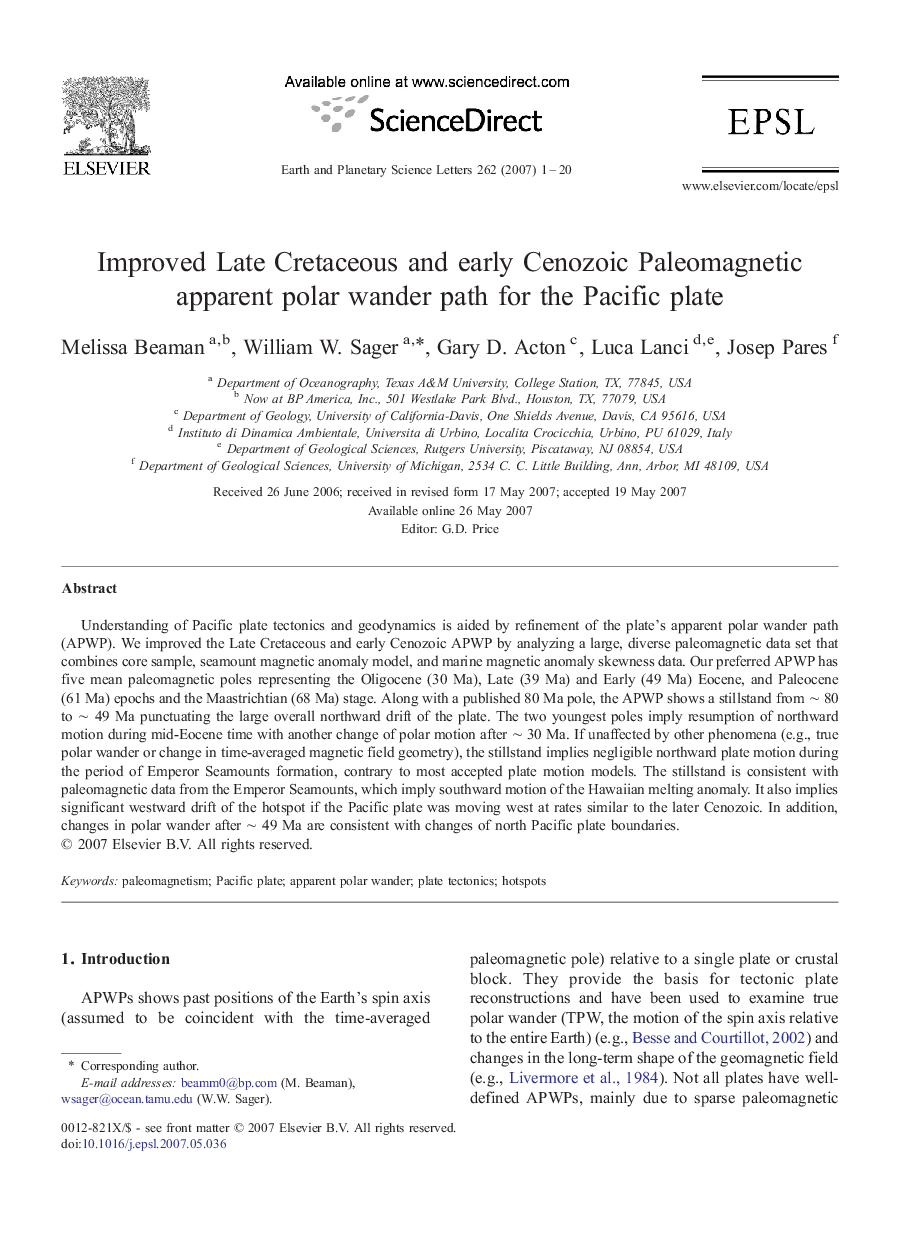| Article ID | Journal | Published Year | Pages | File Type |
|---|---|---|---|---|
| 4680135 | Earth and Planetary Science Letters | 2007 | 20 Pages |
Understanding of Pacific plate tectonics and geodynamics is aided by refinement of the plate's apparent polar wander path (APWP). We improved the Late Cretaceous and early Cenozoic APWP by analyzing a large, diverse paleomagnetic data set that combines core sample, seamount magnetic anomaly model, and marine magnetic anomaly skewness data. Our preferred APWP has five mean paleomagnetic poles representing the Oligocene (30 Ma), Late (39 Ma) and Early (49 Ma) Eocene, and Paleocene (61 Ma) epochs and the Maastrichtian (68 Ma) stage. Along with a published 80 Ma pole, the APWP shows a stillstand from ∼ 80 to ∼ 49 Ma punctuating the large overall northward drift of the plate. The two youngest poles imply resumption of northward motion during mid-Eocene time with another change of polar motion after ∼ 30 Ma. If unaffected by other phenomena (e.g., true polar wander or change in time-averaged magnetic field geometry), the stillstand implies negligible northward plate motion during the period of Emperor Seamounts formation, contrary to most accepted plate motion models. The stillstand is consistent with paleomagnetic data from the Emperor Seamounts, which imply southward motion of the Hawaiian melting anomaly. It also implies significant westward drift of the hotspot if the Pacific plate was moving west at rates similar to the later Cenozoic. In addition, changes in polar wander after ∼ 49 Ma are consistent with changes of north Pacific plate boundaries.
